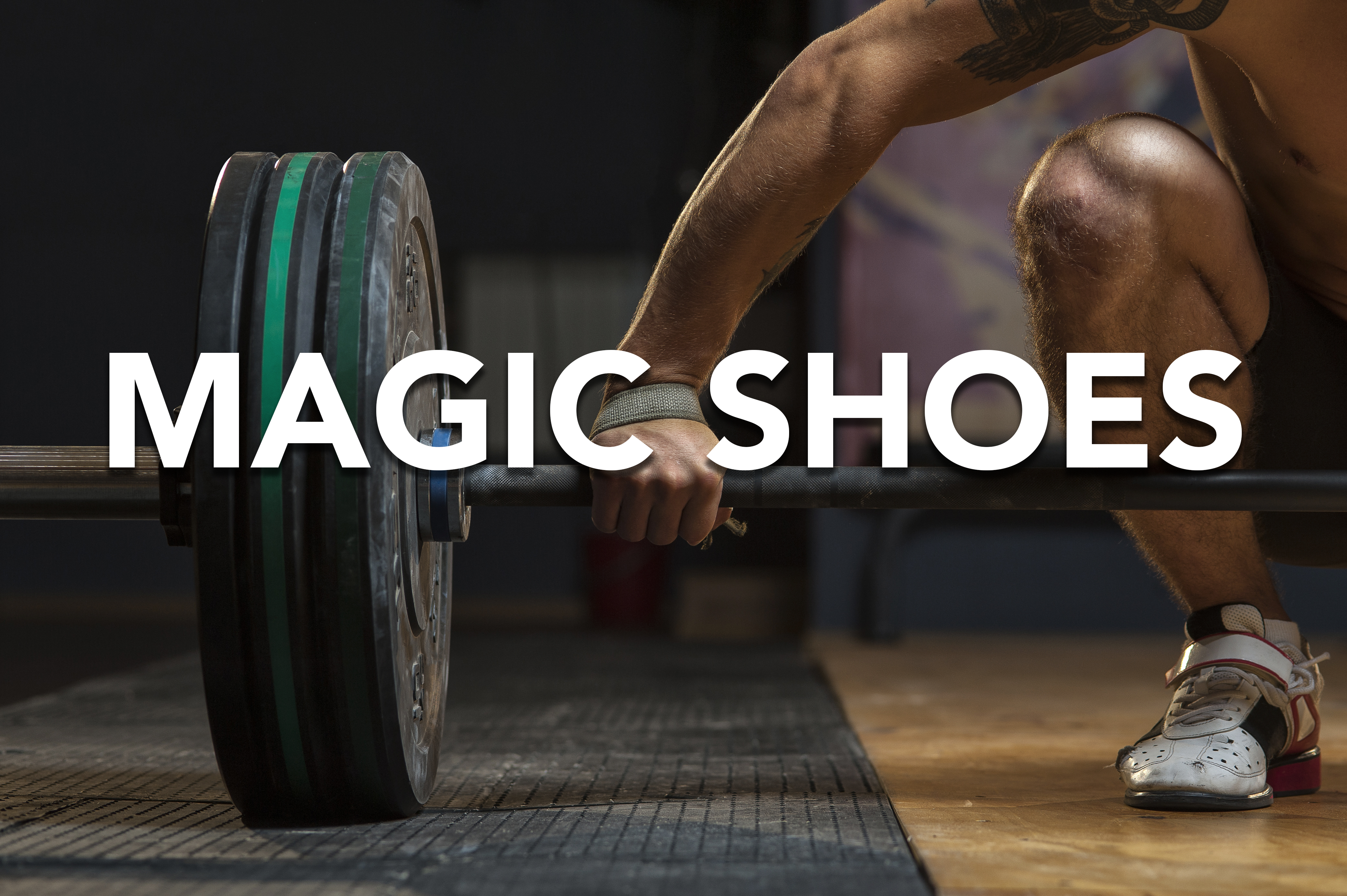Magic Shoes
Posted by Doug Staley @dougstaley.shw on Jul 10th 2017
Squat shoes seem to be a very popular subject of conversation lately. Heels, flats or barefoot it seems like lifters are getting ready for a night on the town more than a night in a squat rack. People are searching for their “Forest Gump” moment and hoping to find the magic shoe that makes their squat not suck. Truth of the matter is the shoe really does play a big role, but how?
When I coach a new lifter, or anyone that is learning to squat, I have them us a flat shoe or cross trainer because 9 out of 10 times a person already owns a pair. The new trend is to go out and buy a $300.00 set of adipowers or ramaleos first and worry about form later. I mean I guess that makes sense? Spend a ton of money on a set of shoes used once a week instead of searching for the real issue in your squat. Genius. I stick with flats with most of my lifters, I believe that any issue a lifter has that would cause them to need a flat can be fixed by mobilizing the ankle or stretching the glutes and hams. Flats allow the body to stay in a more natural position, there’s a reason our feet are flat and not at an angle.
I do believe that heeled shoes have their place, but it takes a certain type of squat to require the added angle. If a squatter squats with a very narrow stance, inside or just under the shoulders, this would cause the need for a heel. A close stance will usually mean the lifter squats very upright requiring the added dorsiflexion from the ankle. The squatters knees will usually track more forward and their hamstrings will come close to their calves. This is why Olympic lifters use them and hence the name “Oly Shoes”. Olympic lifters need the added dorsiflexion is need for the low catch position of the snatch and clean. The heel also helps Oly Lifters to position the bar over the back of the shoulders instead of the head in the snatch or jerk, keeping the bar over the center of mass.
The primary con I see with heeled shoes and squatting start when lifters take a wide stance, outside the hips and shoulders. The lifter will usually also turn their feet out and open the knees but still keep them over their heel or just inside the heel. Flat shoes are best for this stance because the lifter will try to keep their shins vertical to the floor and sit back over the heels with a slight lean forward so the bar stays over top of the center of mass and mid foot. When you add a heel to this style of squat its common to see a “butt wink” or pelvic tilt in the bottom of the squat. This puts a mass amount of pressure on the lifters sacrum and lumbar spine which can lead to low back injuries. If you squat wide with a heel you are fighting the slope of the heel pushing you forward and your knee rotation trying to keep your shins vertical.
So why are heels so popular? It’s like anything else, a big name in the industry probably posted a Facebook or Instagram video with them on and all of a sudden the masses needed them. All in all, a new shoe won’t add 200lbs to your squat, but good form and mobility work will.
+ Share
